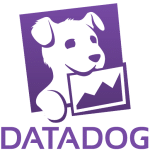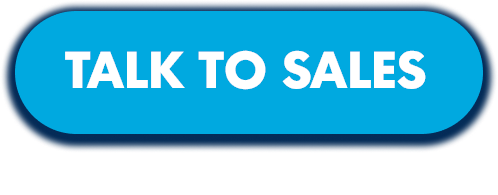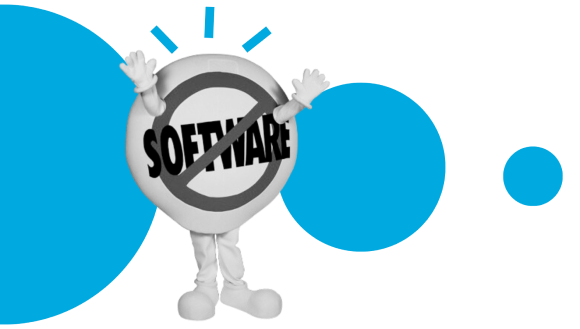WHAT IS PRODUCT-LED GROWTH (PLG)?
Product-led growth (PLG) is a growth strategy where the product itself acts as the primary driver of acquisition, retention, and expansion. The term was originally coined in 2016 by OpenView’s Blake Bartlett.



PRODUCT-LED GROWTH EXPLAINED

The B2B customer journey starts with self-service.
Enterprise end users can discover products and start using them immediately. Self-service eliminates friction in adopting new software.

PLG isn’t going away.
B2B users are just consumers at work. They’ve been conditioned by their consumer apps to see results instantly and on their own schedule.
THE HISTORY OF SOFTWARE GO-TO-MARKET
How did we get here?
This market shift may feel huge, but it hasn’t happened overnight. The industry has been moving toward the Age of Connected Work for some time, and it has big implications for the way software companies operate.
1980s – 1990s: Field Sales
Back in the 80s and 90s, software purchases were expensive CAPEX investments made by senior IT leaders. This required field sales executing an expensive wine-and-dine playbook to win RFPs and long sales cycles.

2000’s: Inbound Marketing & Inside Sales
The rise of cloud-based SaaS meant software was no longer purchased and installed in a data center. Instead, it was now rented on a subscription basis and accessed via any web browser.
This shifted software buying power to line-of-business executives—for example, the VP Sales buys sales software, the VP Marketing buys marketing software, and so on.
The buyer’s journey evolved to match the new buyer. Line-of-business executives have day jobs and want to self-educate before talking to sales, which led to rise of content marketing and nurture cadences. This more educated and less patient buyer then drove the transition from relationship-driven field sales to transactional inside sales.

2010–Now: Product-led Growth
SaaS companies like Slack and Dropbox asked the question,
“What if we made enterprise software self-service, like B2C apps? Would that work?”
And the B2B market responded powerfully with a collective,
“Yes, please! What took you so long?”
It turns out that busy professionals got even more impatient and didn’t like having to “Talk to Sales” for months before they could try the product for themselves.
The rise of self-service in enterprise software had a profound side effect. Anyone in the organization can discover and adopt a new tool for themselves and their team. PLG is the ultimate democratization of software buying power—putting end users and teams in control of their own technology stack.

THE BUSINESS BENEFITS OF PLG
High volume self-service forces the product to constantly improve and deliver value on its own, without human support.
PLG companies are ‘always open’ 24/7 and growth isn’t constrained by how quickly a company can hire sales reps.
PLG de-labors growth through self-service and automation, which means lower sales, marketing and onboarding costs.
The same PLG product can serve all market segments, from individuals and SMBs, all the way to large enterprises.
Join over 50,000 people already experiencing the benefits of PLG
Tech news, tactics and exclusive growth insights directly to your inbox every Saturday. Always SaaS, never spam.
hbspt.forms.create({
region: "na1",
css: '',
cssRequired: '',
portalId: "366266",
formId: "27b63d94-4db6-4eb3-b8d6-325e43faabe2"
});
EXAMPLES OF PLG COMPANIES

Datadog is a monitoring platform for cloud-scale applications and is beloved by the developers they serve. When OpenView led their Series B back in 2014, we did so for a few reasons:
- They solved a pain point nearly universal among developers.
- They delivered value to customers without any friction.
- They grew rapidly inside of an account after the initial adoption.
Datadog is a shining example of how product-led adoption can scale to the enterprise.

Calendly allows people to collaboratively schedule with efficiency and ease. When OpenView invested, we did so because:
- They solved a nearly universal problem.
- Their product gets adopted quickly among invitees.
- Their product acquisition is frictionless.
Every time someone sends a Calendly invite, they’re automatically promoting the product and starting a viral loop.

Airtable is a spreadsheet-database hybrid platform. We consider them PLG all-stars for a couple reasons:
- They built a self-serve product that could be adopted from the bottom up.
- Their reverse-trial pricing model helped Airtable scale quickly.
While Airtable is now used in offices worldwide, many of Airtable’s original customers were individuals looking for a better way to organize personal projects–everything from wedding plans to wine collections. This trajectory was intentional and continues to enable customer acquisition at scale.
Who hasn’t heard of Slack and their email ending chat software? We consider them a PLG pioneer for a couple notable reasons:
- They built a viral self-service product.
- Their product shows a deep understanding of users’ frustrations with email.
Slack isn’t just selling software – they’re selling a more productive, streamlined way for team members to communicate with one another. The secret to Slack’s success lies in their thoughtful understanding of those benefits.
HOW TO MEASURE PLG
These are the must-track metrics for product-led growth.
PLG businesses often have lower growth rates than their peers until they reach the $10M ARR mark—after which the inverse is true. Emphasizing revenue growth too early could actually detract from the promising high-growth engines at the heart of a PLG business.
Net Dollar Retention (NDR) measures the rate of expansion minus contraction and churn within a customer base. Best-in-class PLG companies excel at land-and-expand. They demonstrate 130–150% NDR on an annualized basis.
Tracking the natural rate of growth allows PLG companies to pinpoint the percentage of their recurring revenue that comes from organic channels and starts with the product.
Activation rate is an indicator of whether a user has actually experienced value after signing up for a product. Benchmarking data indicates a 20-40% activation rate is normal.
CAC payback assumes that all growth comes from sales and marketing spend (not product). PLG companies should instead look to the ratio of net new ARR versus cash burned on a quarterly basis.
Product qualified accounts (PQAs) help PLG companies identify high-value sales opportunities within their existing product users.
SEE HOW YOU STACK UP 

Our 2022 Product Benchmark Report shows that product-led companies are more than twice as likely to be growing quickly (100% year-on-year revenue growth) than their peers.
HOW TO TRANSITION TO SELF-SERVICE
It’s hard, but not impossible.
There are plenty of challenges in transitioning an existing product or business to PLG. Doing so takes a strong commitment from the top and the patience to invest before seeing immediate results.
More established companies have transitioned to PLG than one might expect, including HubSpot, ServiceNow, New Relic, and Docker. HubSpot is our favorite example, and you can hear Mark Roberge walk through the full story.
How to get started on your PLG journey
Start with the biggest gaps or wasted resources in your customer journey. These gaps might include low conversion rates, weak activation during onboarding, or limited cross-sell within existing customers.
Then carve out a cross-functional team to address these gaps with self-service and automation. The goal is to generate learnings quickly – focus on shipping experiments and measuring the results.
HOW TO FUNDRAISE A PLG COMPANY
Investors evaluate PLG companies based on different characteristics and metrics than traditional SaaS companies.
By the time a PLG company is raising their Series A, investors generally want to see that the product is live and that someone can sign up for the product themselves within a couple of minutes.
Next, investors will look for early signs of product-market fit and initial traction. A flattening cohort retention curve (also called a smile curve) indicates that the product value is resonating with users and that users continue to stay month after month.
Most startups aren’t succeeding at everything all of the time–the story a founder tells around their metrics can be as important as the metrics themselves.
Read more: Your Guide to a PLG Series A
HOW DOES PLG PRICING WORK?
Get the latest in SaaS pricing and PLG in Kyle Poyar’s weekly newsletter, Growth Unhinged. Subscribe for topics like:
Your guide to reverse trials
What’s better for PLG: freemium or free trial? The reality is that you don’t have to choose.
Your guide to product virality
Even if your product isn’t inherently viral like Calendly, it pays to give product virality a second look.
Your guide to product-led marketing
Attracting users for PLG products doesn’t look like traditional B2B marketing. Enter product-led marketing: making it easy for end users to discover your product when they need it.
Your guide to product-led sales
Today’s go-to-market playbook embraces product-led sales (PLS). PLS reduces friction in the sales cycle by pairing product usage with personalized assistance.
